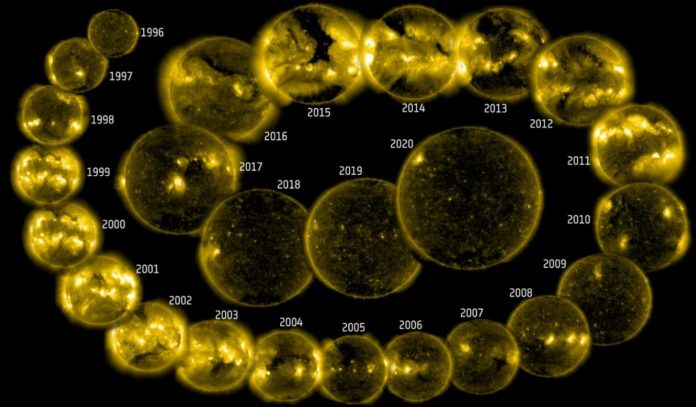The Solar and Heliospheric Observatory (SOHO) was launched on December 2, 1995 and designed to provide a complete view of our Sun with a view to lasting two years.
But the spacecraft was able to stay for a long time, and the mission was so successful that ESA and NASA decided to extend its life several times.
The Solar and Heliospheric Observatory (SOHO), the space probe that was launched 25 years ago by the European Space Agency (ESA) and the National Aeronautics and Space Administration (NASA), has been essential in helping scientists to study the heart of our solar system, the Sun.
To celebrate the anniversary of the SOHO Spacecraft, ESA compiled an interesting mosaic of images and NASA released a video on the great successes of the project.
“SOHO has been a cornerstone of modern solar physics and launched many careers, including my own. My research group – and many others – continue to use SOHO data 25 years later. It is an amazing mission
says Professor Peter Gallagher, Director of the Dunsink Observatory in Dublin, Ireland, and Head of Astrophysics at the Dublin Institute for Advanced Studies (DIAS), cited by the journal ScienceAlert.
As a result, nearly 6,000 scientific articles have been published based on the space observatory reports.
Astrophysicist Karl Battams, principal investigator of one of SOHO’s instruments, the LASCO coronagraph, wrote on his Twitter account that when he was a student his solar physics professor explained to them that “if we had any solar phys textbooks published before SOHO, we should not use them for her class. SOHO literally re-wrote the books on solar physics!”
Here are some of the SOHO discoveries:
- The first images of the convection zone of a star and the structure of sunspots below the surface.
- The most detailed and accurate measurements of the temperature structure, internal rotation and gas flows in the solar interior.
- The discovery of new dynamic solar phenomena such as coronal waves and solar tornadoes.
- The revolution of being able to forecast space weather, giving up to three days advance notice of disturbances directed at Earth, and playing the leading role in the early warning system for space weather.
- Tracking the impact of solar variability on Earth’s climate.
The mission was launched to provide a complete view of our Sun, and was specially designed to help understand the flow of energy and material from our star: the solar wind and coronal mass ejections. The main objectives of the project were to determine the structure and dynamics of the solar interior, learn more about the solar corona and discover where the solar wind occurs and how it accelerates, notes the portal Universe Today.
SOHO’s scientific payload includes 12 complementary instruments, developed and provided by an international consortium of 29 institutes from 15 countries. More than 1,500 scientists from around the world are directly involved in SOHO instruments or have used data from this mission in their research programs.
But the 25 years of SOHO were not without several serious incidents. Two and a half years after launch, in June 1998, the project almost ended after a routine maneuver of the spacecraft. Contact was lost, and the mission was thought to be over. But engineering and science teams worked painstakingly for three months, eventually using a technique called bistatic radar to find and re-establish contact with SOHO.
They used the recently collapsed Arecibo Observatory in Puerto Rico to transmit a signal to SOHO and one of the Deep Space Network dishes in Goldstone, California acted as a receiver, locating the echo from the spacecraft and tracking it using radar techniques. The team managed to bring the mission back online, and all instruments survived the extreme temperatures of the blackout.
But then, just a month after the spacecraft was back on track, its three stabilizing gyros failed. So the team developed new software that could control SOHO without the need for gyroscopes, and the spacecraft was returned to operation.
But since then, SOHO has remained a landmark project and is now working in collaboration with other solar missions, such as the Solar Dynamics Observatory, STEREO, and the Parker Solar Probe.
